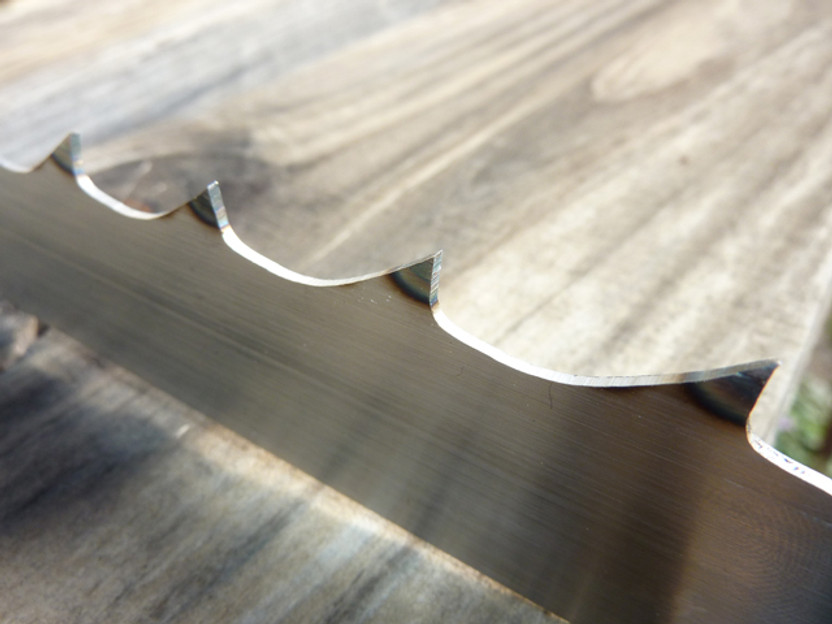Prolonging Bandsaw Blade Life
Posted by Admin on Jan 14th 2019
In the last issue we discussed the basics what makes up a bandsaw blade. In this brief article we are going to go over two key features of a blade that will hopefully help you in striving to get the most out of your blades; the blade tooth and body.
The question I am most often asked is “How do I get the most life from my band blades?” My answer is “It depends.” Let me explain.
First, let’s consider that there are two parts to the bandsaw blade; the body and the tooth. The tooth is the tool that actually does the sawing of the wood fiber. The body is the tool holder.
The quality of a tooth is rated based on its sharpness, hardness, and wear resistance. A quality tooth will have all three of these characteristics and it will be seen in how cleanly it cuts through the wood fibers of a log while putting little demand on the body of the blade. A dull tooth or a medium sharp tooth on the other hand, puts more demand and stress on the body.
As progressive sawing dulls the tooth, the demand on the body to hold the teeth straight and drive it forward becomes greater. When the tooth reaches a very dull status the demand on the body may become greater than the steel that makes up the body can handle. The sharper the tooth is to begin with the longer it will run before reaching a point where it is too dull to saw. The hardness and wear resistance work hand in hand to preserve the sharp edge.
The body is rated by its hardness. Typically a soft, very flexible blade (as band blades go) has a hardness of about 25 Rockwell, while harder blades will be in the 34-47 Rockwell range. The quality of the steel is more important than the hardness. Some steel will act like a rubber band at RC45 while other steel with the same RC rating will break from brittleness. Quality steel will be strong and hard while remaining flexible.
So what puts the stress on the blade body?
First, the tension that you set using your tensioning device is where the stress begins and every type of band body has its own tension range. Some steel at RC45 has to be tensioned low while others require a medium or high tension.
Second, the speed at which you saw will determine tooth load at the various levels of tooth dulling. The evaluation of tooth load according to the tooth sharpenss or dullness is where much life can be gained with a bandsaw blade. As the tooth dulls, the stress to the body increases with each cut which results in the blade body stretching ever increasingly, resulting in either miscuts and/or blade breakage.
With these facts here is my simple recommendation for prolonging the life of your blades: Set your tension as low as possible to saw straight and saw at a moderate speed until the tooth begins to dull. Keep in mind this is advice for prolonging the life of your blades. Not everyone has that goal as some are running a full scale production operation in which their question is “How can I get the most board feet per hour?” But for the vast majority of sawmill owners I talk with, blade life longevity is often their main desire.
Next is to sharpen your own bands. Sharpening more frequently will preserve the body for a longer lasting blade. Instead of waiting till the blade is so dull it is no longer able to cut, remove the blade early so that it only requires a light sharpening. This will help prevent the blade from getting overstressed as the result of prolonged sawing with a dull tooth and it will allow you to get as much use out of a blade as possible. When sharpening your blades, take the time to inspect them to be sure all the dullness has been removed as it is vital to the success of getting the most out of your blades.
If you have no plans on sharpening and want to just run them till they break here is what I would suggest: Start by running your tension as low as possible while being able to cut straight. Then increase the tension as the tooth dulls. When the tooth becomes very dull, sawing will depend solely on the strength of the body to drive it forward.
Hopefully with this bit of useful information and some trial and error with your blades you can find the satisfaction that you have yielded the most from your blades.

